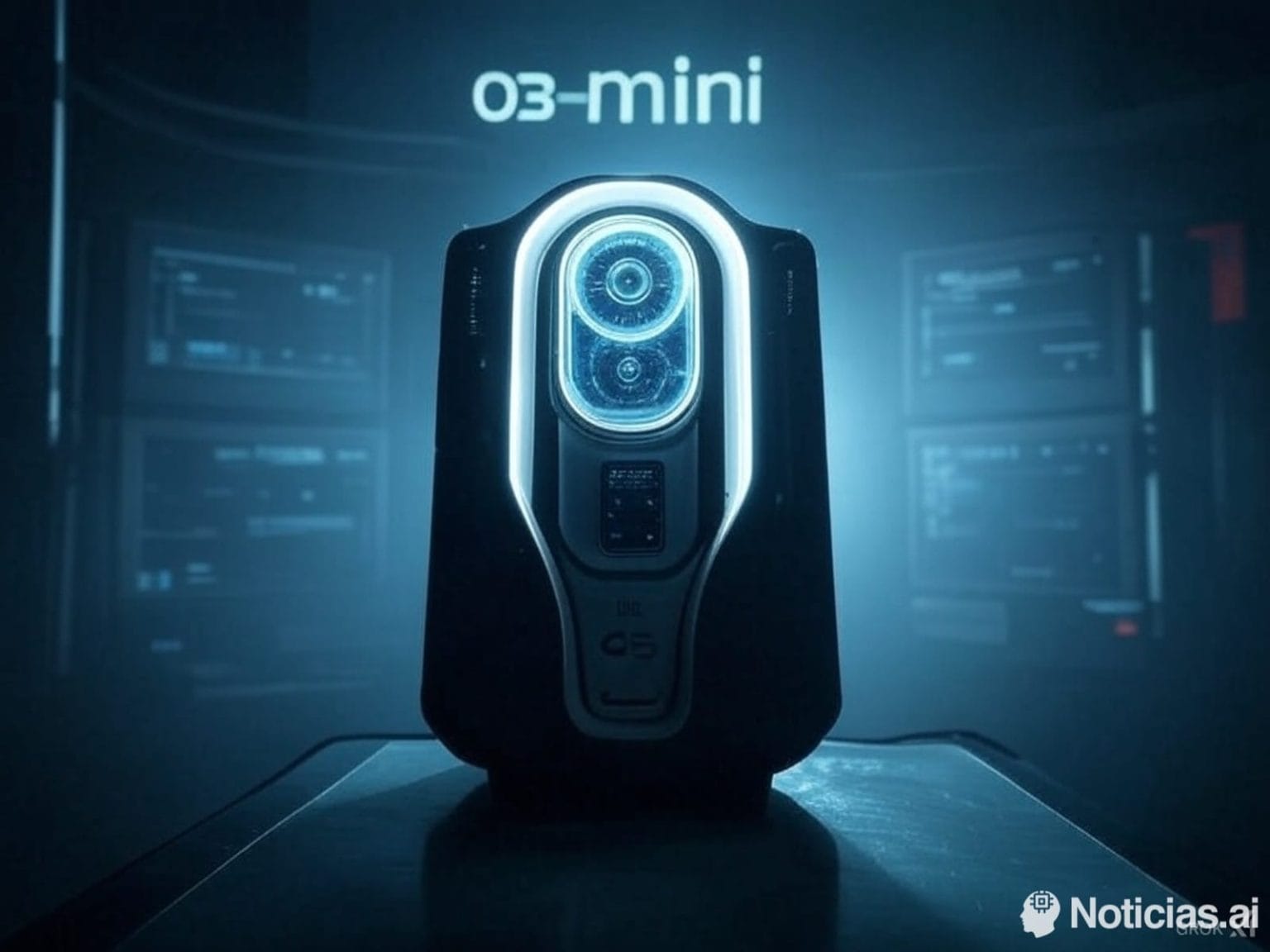OpenAI has announced the launch of o3-mini, the latest model in its series of artificial intelligence optimized for reasoning, with a particular emphasis on science, technology, engineering, and mathematics (STEM). With this development, the company advances its goal of making advanced AI models more accessible, improving the relationship between performance, costs, and efficiency.
The new model, which is now available on ChatGPT and the APIAn API, short for “Application Programming Interface” from OpenAI, is positioned as the most affordable option for complex reasoning tasks, while tripling the daily interaction limit for Plus and Team users, increasing from 50 to 150 messages. Additionally, for the first time, OpenAI will allow free users to try an advanced reasoning model in ChatGPT.
o3-mini: A Leap in Intelligence and Speed
OpenAI has designed o3-mini with a focus on technical performance, excelling in advanced math, programming, and logic tasks. Among its key improvements are:
- Increased speed: it is 24% faster than o1-mini, with average response times of 7.7 seconds, compared to its predecessor’s 10.16 seconds.
- Reduction of errors: in tests with complex problems, there was a 39% decrease in critical failures compared to o1-mini.
- Greater accuracy in STEM: performance assessments in competitions such as AIME (American Invitational Mathematics Examination) and GPQA (Graduate-Level Science Questions) show that o3-mini matches or exceeds o1-mini in logic and advanced calculus problems.
- Reasoning flexibility: developers can adjust the depth of analysis through three levels of reasoning effort (low, medium, and high), adapting it to different use cases.
- New features for developers: support for structured outputs, function calls, and enhanced APIs.
Despite these improvements, o3-mini does not include vision capabilities, so OpenAI recommends using o1 for tasks that require visual processing.
Greater Accessibility for ChatGPT and API Users
The new model is now available to ChatGPT Plus, Team, and Pro users, while companies using ChatGPT Enterprise will receive it in a week. Moreover, OpenAI has made the groundbreaking decision to allow free plan users to access an advanced reasoning model for the first time, a measure aimed at democratizing access to high-quality artificial intelligence.
Developers using the OpenAI API will be able to access o3-mini through the Chat Completions API, Assistants API, and Batch API, with priority for usage levels 3 to 5.
o3-mini vs. Previous Models: Better Performance and Lower Cost
The model has been optimized to deliver performance equivalent to OpenAI o1 in STEM tasks, but with lower latency and greater resource efficiency. In speed and accuracy tests, o3-mini has proven to be preferred in 56% of direct comparisons with o1-mini, while in real high-level problems, a 39% reduction in critical errors has been observed.
Additionally, the company has implemented improvements in security and risk mitigation, applying deliberative alignment strategies that enhance the model’s ability to filter prohibited content. In this aspect, o3-mini has outperformed GPT-4o in security and failure prevention tests.
Security and Risk Mitigation
OpenAI has strengthened the security of o3-mini with a series of advanced techniques, including alignment assessments, jailbreak tests, and external red teaming. According to the company, the model exceeds GPT-4o standards in critical tasks of sensitive content detection and abuse prevention.
The methods used to ensure security include:
- Deliberative Alignment: the model reasons about human safety criteria before responding.
- Reduction of vulnerabilities to jailbreaks: in advanced security tests, o3-mini has proven to be more resistant to manipulations than previous versions.
- External assessments and stress tests: OpenAI has engaged specialized teams for red teaming to identify potential risks before deployment.
Future Outlook and Evolution of Artificial Intelligence
The launch of o3-mini marks another step in OpenAI’s strategy to make advanced AI more accessible and cost-effective, reducing costs without compromising the quality of reasoning.
Since the launch of GPT-4, the company has reduced the processing cost per token by 95%, maintaining a leading level of performance in the industry. According to OpenAI, the goal is to continue optimizing cost-efficient AI models, which will enable broader adoption in educational, scientific, and business sectors.
With o3-mini, OpenAI reinforces its commitment to more accessible, secure, and powerful artificial intelligence, marking a milestone in the evolution of automated reasoning technology.
via: AI News

